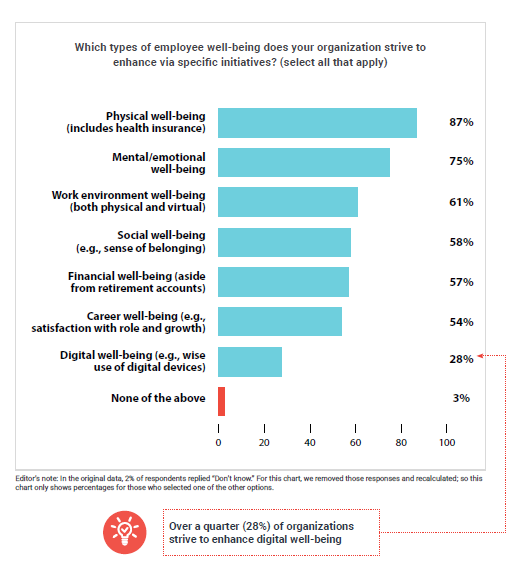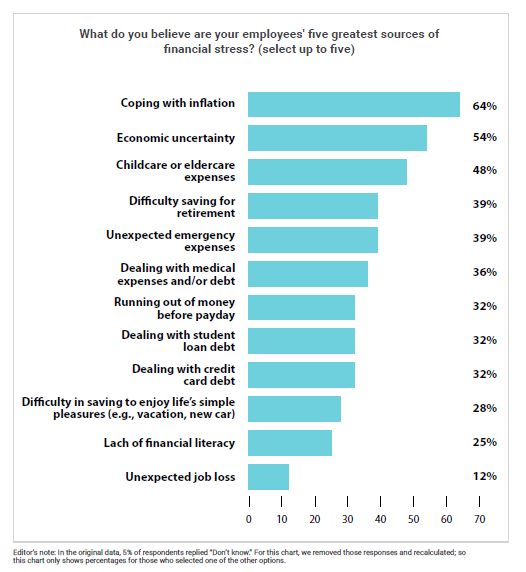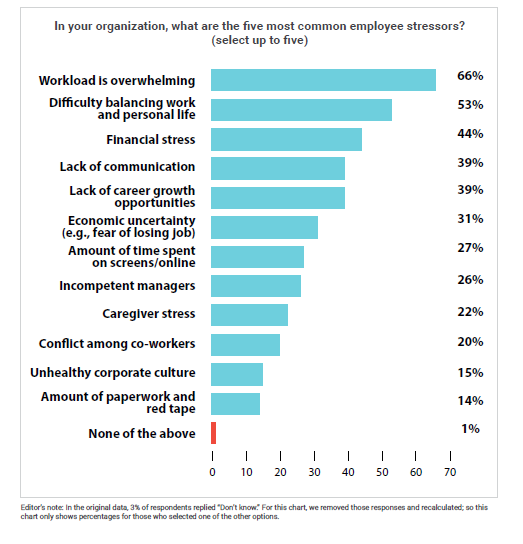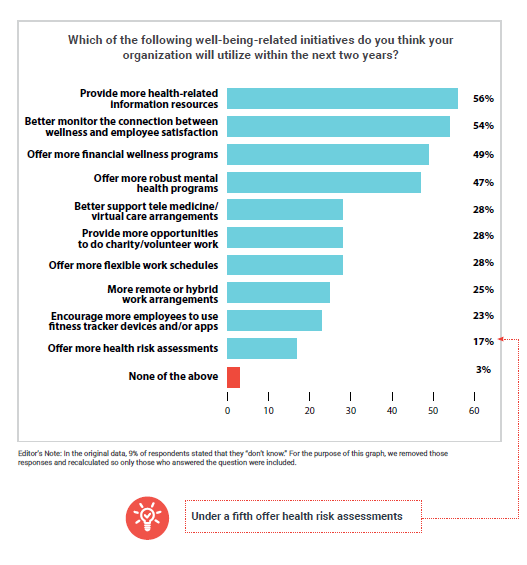HR.com’s Future of Employee Well-Being 2024
Cultivate employee well-being for a flourishing workforce
Posted on 06-28-2024, Read Time: 5 Min
Share:

Major Research Findings
- Most organizations strive to improve employee well-being through various special initiatives, but fewer report benefiting in terms of employee outcomes.
- Organizations are struggling to achieve higher effectiveness in well-being programs and some widely prevalent problems may be hindering them.
- Multiple stressors affect employee well-being.
- A majority of organizations still lack a holistic approach to employee well-being.
- Most organizations have some form of action plan for the future of their employee well-being.
Employee Well-being Practices Today
We asked respondents which types of employee well-being they plan to improve via specific initiatives.- Almost nine in 10 organizations use special initiatives to increase physical well-being, with health insurance being included among those initiatives.
- Work environment and social well-being are cited by about three-fifths.
- Financial and career well-being, cited by over half of the respondents, are two other categories that have become more prevalent in recent years.

Integration of Well-being Programs
More organizations (33%) report that their employee well-being initiatives are integrated only to a low degree or not at all compared to those citing a high or very high degree (27%). This highlights a considerable gap in the integration of employee well-being programs.The good news is that a majority (68%) report that their initiatives are integrated to at least a moderate extent. Employee well-being leaders are about nine times more likely than laggards to say their organization has a holistic approach to well-being.
Financial Well-being Challenges and Practices
Financial distress can be palpable for people and affect their effectiveness on the job.- Among our respondents, about 64% believe coping with inflation is an issue
- About 54% say economic uncertainty is an issue.
- Further, just under half (48%) are dealing with childcare and eldercare expenses.

Mental Well-being Challenges and Practices
About half say employees’ mental health is at least among the top three priorities for HR. This highlights a significant shift in the perception of mental health within the workplace.When it comes to mental health initiatives, employee assistance programs (EAPs) are by far the most widely used, at 84%. The only other mental health initiatives used by a majority of respondents are flexible work arrangements, mental health benefits (which are often delivered as part of employee health insurance packages), and information about managing mental health.
The constant pressure to meet high productivity standards often leads to prolonged working hours and burnout, while the blurred boundaries between work and personal life make it challenging to fully disconnect and recharge. Financial stress, exacerbated by rising living costs and economic uncertainties, adds another layer of anxiety, affecting mental and physical health.

The Future of Employee Well-being
Many organizations will continue to provide health-related information resources over the next two years (56%) in addition to monitoring the connection between workplace wellness and employee satisfaction (54%) and financial wellness programs (49%).
While there is still ambiguity about AI’s impact on employee well-being, with 34% of organizations citing they don’t know, a similar proportion also say AI is expected to automate repetitive tasks to reduce stressful workloads over the next two years.

Error: No such template "/CustomCode/topleader/category"!


